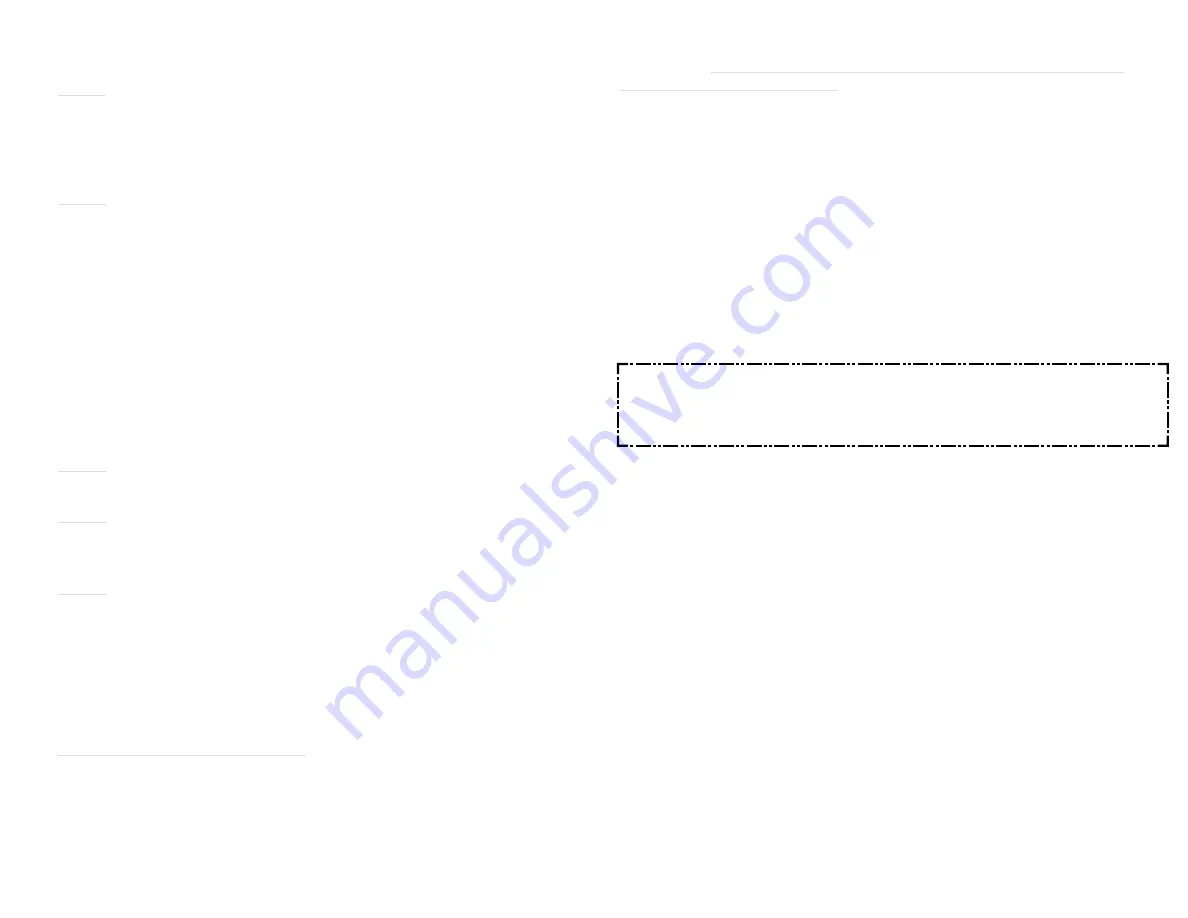
VII.
For Concrete.....
1. Do not fasten into cracks or spalled areas as this weakens holding
power.
2. Concrete must be at least three times thicker than the depth of
penetration of the fastener.
3. Do not fasten closer than 3" from an unsupported edge of masonry.
4. Recommended minimum distance between fastenings is 3" in
concrete.
5. Average required depth of penetration of fasteners into concrete is:
> 1-1/2" in length weight concrete (less than 2000 PSI), block, etc.
> 1" in average weight concrete.
> 3/4" in hard concrete (5000 to 6000 PSI).
6. Concrete with a compressive strength over 8400 PSI is not normally
suitable for fastening with powder actuated fasteners.
For Steel.....
1. Do not fasten into steel thinner than the shank diameter of the
fastener.
2. Do not fasten closer than 1/2" from the edge of steel.
3. Recommended minimum distance between fastenings is 1" in steel.
4. Do not use fasteners with shanks longer than required for the
application.
5. Average depth of penetration for structural steel is 3/16" to 1/2".
6. To achieve maximum holding power in steel plate: Get the fastener
point all the way through the plate. This prevents the steel from
compressing around the point and causing fastener back-out.
7. Do not fasten into pre-drilled holes (unless the tool is equipped with a
positive alignment device) because the fastener may be deflected
by the edge of the hole.
APPLICATION RULES - WARNINGS
VII.
NOTE: To determine the correct length of drive pin for a particular
application, add the thickness of the material to be fastened and the
required depth of penetration into the base material.
EXAMPLE: You want to fasten a 2 x 4 board (1-1/2" thick) to average
strength concrete. The recommended depth of
penetration is 1" - Hence, you would normally use a 2-1/2"
drive pin.
To determine the correct size of a threaded stud, the shank length is deter-
mined by the required penetration into the base material as you are nor-
mally driving a threaded stud directly into the base material. The length of
the threaded portion required is determined by the thickness of the material
that you are going to insert over the threaded stud and fasten down.
Remember that the threads must protrude though the material to be fas-
tened far enough to allow for full thread engagement of the nut or nut/
washer combination.
&!),52% 4/ &/,,/7 4(%3% !00,)#!4)/. 25,%3 -!9 2%35,4
). 0//2 &!34%.).' !.$/2 #/5,$ 2%35,4 ). $%!4( /2
3%2)/53 ).*529 4/ 4(% /0%2!4/2
APPLICATION RULES - WARNINGS cont'd...












